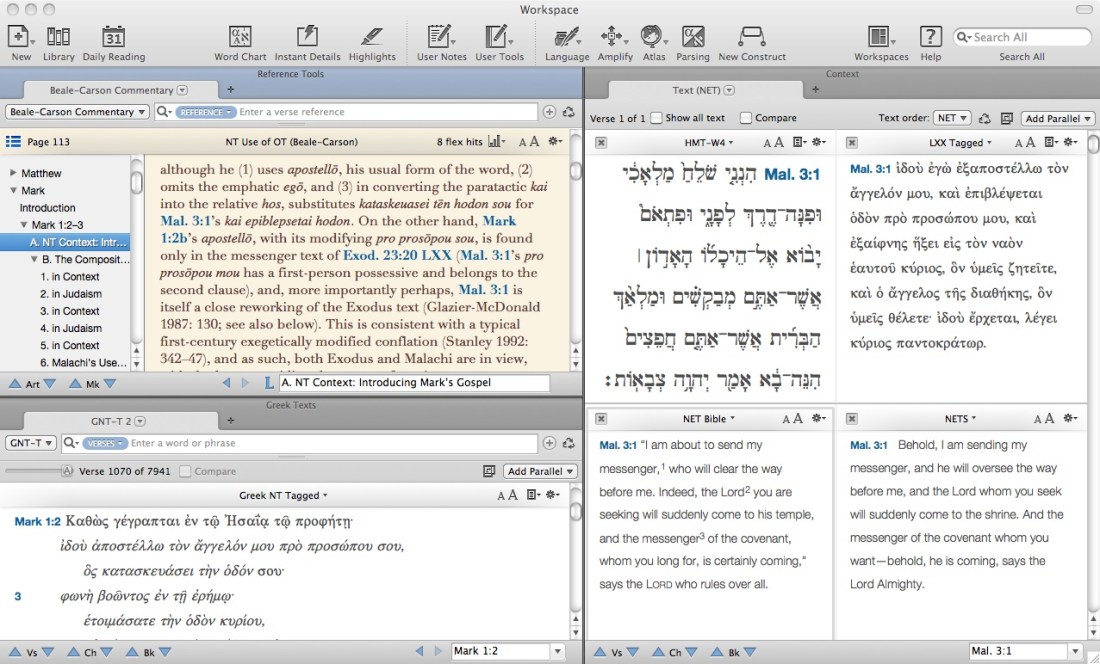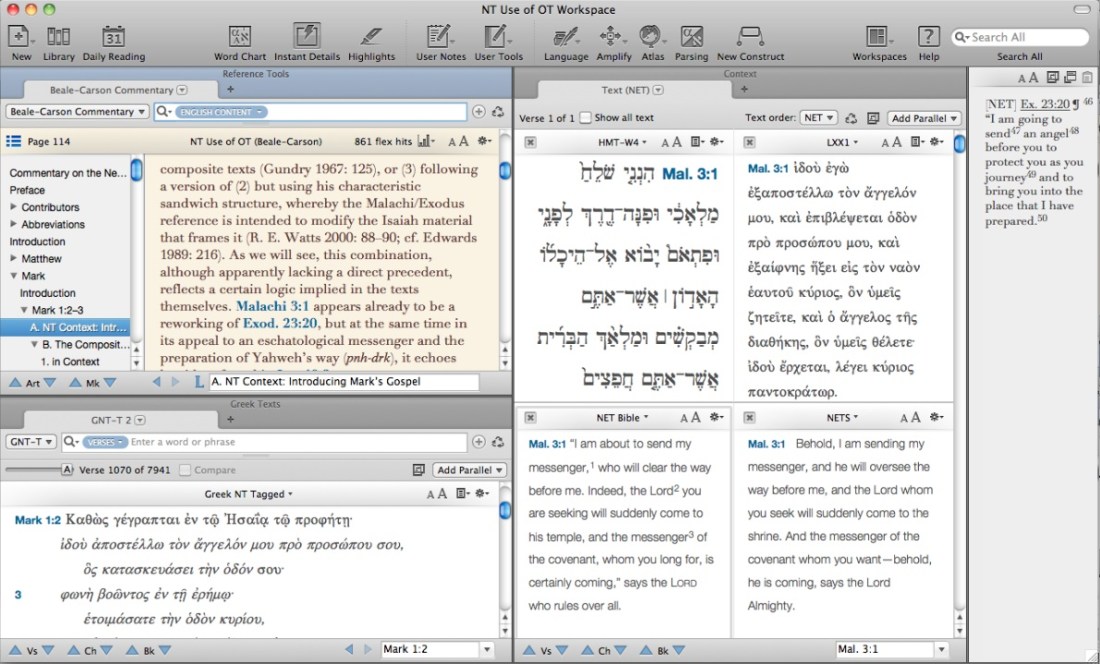 Getting from participles to preaching, from grammar to Good News proclamation, can be a challenge to preachers and teachers when working with the biblical text. But if there is theology in those prepositions, as seminary professors have often noted, careful attention to the morphology and syntax of the text can be key in preparing to expound God’s Word with God’s people.
Getting from participles to preaching, from grammar to Good News proclamation, can be a challenge to preachers and teachers when working with the biblical text. But if there is theology in those prepositions, as seminary professors have often noted, careful attention to the morphology and syntax of the text can be key in preparing to expound God’s Word with God’s people.
B&H Academic’s Exegetical Guide to the Greek New Testament “aims to close that gap between stranded student (or former student) and daunting text and to bridge that gulf between morphological analysis and exegesis.” As a volume in a projected set of 20 volumes, Murray J. Harris’s Colossians and Philemon “seeks to provide in a single volume all the necessary information for basic understanding of the Greek text and to afford suggestions for more detailed study.” Similar to the Baylor Handbook series, the Exegetical Guide is not a “full-scale” commentary. This affords the author more opportunity to comment on the original language of the biblical text.
Both Colossians and Philemon in this volume contain a brief but sufficient Introduction. It treats authorship (Harris defends Pauline authorship based on Colossians’ similarity to Philemon, which is more generally accepted as Pauline); date (he puts the two letters at 60-61); occasion and purpose; includes an outline of the letter; and makes commentary recommendations.
Each paragraph of the biblical text has the following features in the commentary:
- A structural analysis of the Greek. This is in sentence flow style–not sentence diagramming; Harris says the former is “a simple exercise in literary physiology–showing how the grammatical and conceptual parts of a paragraph are arranged and related”
- Commentary on each phrase in the Greek, which ranges from morphological analysis to syntax to lexical analysis (great helps for word studies in this book!) to textual variants. Much of the Greek ends up translated into English in each passage of the commentary
- “For Further Study,” a bibliography arranged by topic, e.g., “Prayer in Paul” (1:9-12), “The Will of God” (1:9), etc.
- “Homiletical Suggestions,” not uncommonly more than one for a given passage
In addition, at the end of each letter there is a full English translation of that letter and an “expanded paraphrase” of the Greek. Colossians 3:12-14 in Harris’s translation, for example, reads:
Therefore, as God’s chosen people, who are holy and loved by him, put on heartfelt compassion [σπλάγχνα οἰκτιρμοῦ], kindness, humility, gentleness, and patience. You are to bear with one another, and if anyone has a grievance against someone else, you are to forgive one another. Just as the Lord forgave you, so you also must forgive.
The expanded paraphrase reads, “So, then, since you are God’s chosen people, his elect, dedicated to his service and the objects of his special love….”
The structural analysis, in my view, is the best feature of this densely packed and rich commentary. For example, in his analysis of Colossians 3:1-4, Harris visually shows “Christ” (in Greek) lined up in five different instances, so that he can easily show, “Christ is a central theme of the paragraph (there are five explicit references to him in the four verses).” Just reading the Greek straight through, this may not be as obvious as it is when Harris shows it visually and comments on it.
Harris gives great attention to individual words and phrases within verses. He mentions the major Greek grammars: “Blass-Debrunner-Funk, Robertson, Turner, and Zerwick,” as well as BDAG, the Anchor Bible Dictionary, and other such standard references. Just to give one example, on 1:15 Harris writes:
The ‘firstborn’ was either the eldest child in a family or a person of preeminent rank. The use of this term to describe the Davidic king in Ps 88:28 (LXX) (=Ps 89:27 EVV), ‘I will also appoint him my firstborn (πρωτότοκον), the most exalted of the kings of the earth,’ indicates that it can denote supremacy in rank as well as priority in time.
The sermon suggestions are really just suggestions for the body of a sermon; though they are in outline form, they are not complete sermon outlines. And some of the included outlines (“Wrestling in Prayer” from 2:1-2) will preach better than others (“Introductory Greeting” from Philemon 1-3). Yet anything homiletical like this is more than some Greek-focused, exegetical series offer, and the homiletical suggestions–if not always sufficient in themselves–still make for a good point of departure for the preacher. In fact, Harris only intends “to provide some of the raw materials for sermon preparation.”
The “Glossary of Grammatical and Rhetorical Terms” is one of the best such glossaries I’ve seen in a book like this. It occasionally uses examples from Colossians and Philemon themselves, which is a nice touch.
This Exegetical Guide to the Greek New Testament is a great companion to the Greek text. Harris is sensitive yet incisive, and always thorough. It’s hard to imagine a better guide for the grammatical analysis of Colossians and Philemon in Greek. I look forward to future volumes in this series. (A James volume is coming soon.)
Thanks to B&H Academic for the free review copy of the book. I was under no obligation to provide a positive review. The book’s product page is here (B&H), or see it here (Amazon).















